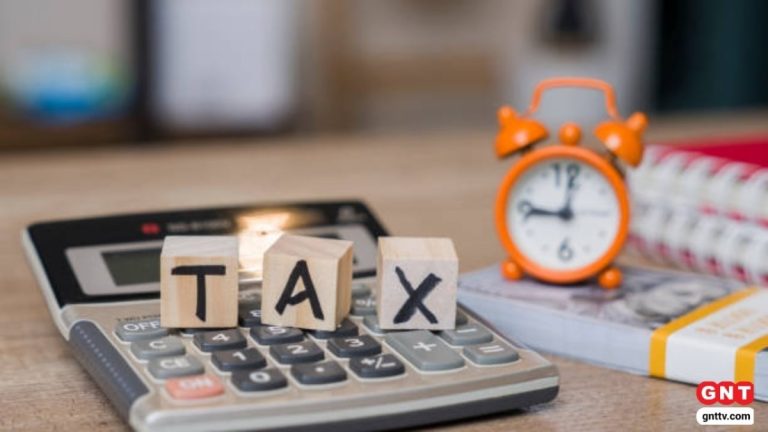Credit card debt is a burden anytime — but it can be especially difficult during times of economic uncertainty.
As recession fears grow and Americans’ financial futures remain unclear, now is the time to get ahead of your credit card debt. In an economic downturn, your risk of taking on high-interest debt balances to cover costs can grow. At the same time, it becomes more difficult to pay down those debts. Recessions typically make lenders tighten their approval standards for loans and credit cards, and promotional 0% APR and balance transfer offers — usually helpful options for paying off existing debt — tend to dry up.
Read more: How to protect your money during economic turmoil, stock market volatility
If you’re already having trouble making your credit card payments or you’re facing mounting balances and late fees, don’t just ignore the problem. Instead, you may find help from an unlikely place: your credit card company.
Credit card hardship programs are payment plans and other resources you may qualify for when you’re having trouble paying your credit card bills, which can help you get back on track. These solutions range from one-time, short-term solutions to long-term payment plans.
These programs can give you options when you’re facing financial issues, whether a personal hardship or broader economic downturn. Hardship programs were a relief option for millions of Americans who were affected financially at the start of the COVID-19 pandemic in 2020, for example.
During a recession these programs can be especially helpful compared to more traditional debt consolidation or payoff options, since credit card issuers and lenders tend to tighten lending standards during economic downturns.
Read more: Is the U.S. in a recession?
The assistance you receive can depend on your circumstances and credit card account history. If you’ve been a cardholder for a long time and consistently pay your bills on time, you’re probably more likely to get offered a payment plan when you fall behind.
Say, for example, you’ve had a one-time financial setback. An unexpected expense has left you without the funds to pay this month, but you expect to be back on track next month. In this case, maybe you just need to ask your issuer for an extension on your deadline.
On the other hand, if you’re facing a job loss, medical issue, natural disaster, or other lasting hardship and are already behind on payments, you may need a longer solution. In such cases, payment plans may include a lower interest rate or other lower costs. Long-term plans can also be more likely to come with restrictions on your card use.
Regardless of the circumstances, the sooner you reach out, the more likely you are to work out a solution that can help you avoid extra fees and interest charges on your account.
Here’s more info about the hardship programs and payment plans you may find from popular credit card companies today.
American Express offers both short- and long-term financial hardship programs for cardholders. Short-term plans last up to 12 months and may still allow you to use your card to make purchases. Long-term plans can last as long as 48 months and typically don’t allow new purchases during the plan period. Some relief options include a lower minimum payment, lower APR, and waived fees.
You can speak with a representative about your options through your Amex account or by phone at 1-866-703-4169.
If you have a Bank of America card, call 1-855-891-3401 or log into your online account to message with a customer service representative about your options. While it doesn’t give specific examples of the hardship plans offered, Bank of America emphasizes on its site that “the earlier you contact us, the sooner we can work together to come up with a solution.”
You can contact Capital One directly to find out what type of payment plans you may be eligible for. Call 1-800-227-4825 to speak with a representative about your account and potential options.
As a first step, Chase recommends reaching out about your options when you’re unable to make credit card payments. “At Chase, we want customers to contact us once they realize they won’t be able to make a payment, so we can discuss how we can help,” the issuer states on its website. You can contact Chase through its credit card customer service line at 1-800-432-3117 or your online account.
Payment assistance options may be available to you if you cannot make your Citi credit card payments. You’ll find more information tailored to your financial situation (for example, whether you’re currently behind on payments or you want to prevent a potential late payment) by logging into your online account or calling the number on the back of your card or Citi’s support number: 1-800-950-5114.
Discover does offer hardship programs to help cardholders stay afloat through tough financial times. The issuer recommends contacting customer service to discuss options if, for example, “you’ve lost your income, your income has significantly dropped, or you’re struggling to meet your monthly payment obligations for other reasons.” Like other issuers, it’s best to contact Discover before you miss a payment, but even after you have a late or missed payment, you can still reach out.
Discover has a live customer service line available 24/7 at 1-800-347-2683. You can also send a secure message or live chat through your online account or app.
U.S. Bank cardholders may have access to “various plans” during periods of financial hardship. If you’re already past due on payments, look for a message within your online account that links to potential payment options. You’ll see different plans available for your situation and can select the best one for you.
If you haven’t yet paid late or received a message, you can contact U.S. Bank through your online account, call 1-800-872-2657, or visit in person if you’re near a branch.
When you cannot pay your credit card bills, contacting Wells Fargo sooner rather than later can help the issuer determine your available options. Payment options can include short-term and long-term plans. Short-term payment plans may offer a lower interest rate or minimum monthly payment. Longer-term plans may affect your interest rate or the size of your payments owed. Contact Wells Fargo by calling 1-800-642-4720.
The exact details of the hardship program payment plan you opt into may impact your credit score — for example, how the program is reported, whether you ultimately close the account, or if the payment plan affects your credit utilization.
When you opt into a plan, ask your credit card issuer how it might report the hardship to the credit bureaus and appear on your credit report — and how your credit history can be affected.
However, if you’re behind on your payments or consistently paying late, your credit score has likely already been affected. Late and missed payments can impact your payment history — the most influential factor in your FICO credit score — and hurt your credit over time or lead to delinquencies.
If a payment plan can help you keep your account current without missing future payments (and help you pay down debt) it’s likely still better for your credit in the long run.
Consider these additional options if you’re having issues making your credit card payments:
Balance transfers are a great way to pay down debt quickly and temporarily eliminate rising interest charges, but they do require good credit to qualify. If you have at least a good credit score (670 or higher), you may qualify for a balance transfer credit card with an introductory 0% APR on transfers for 12-21 months.
You will likely be required to pay a balance transfer fee worth 3%-5% of your total balance. But even for very high balances, the fee cost doesn’t come near the amount you’ll save on interest with today’s average rates over 21% APR.
-
Introductory Purchases APR
0% Intro APR on Purchases for 15 months
-
Ongoing Purchases APR
18.99% – 28.49% Variable
-
Introductory Balance Transfer APR
0% Intro APR on Balance Transfers for 15 months
-
Ongoing Balance Transfer APR
18.99% – 28.49% Variable
Taking on a personal loan is another option you may want to consider if you have existing debt you want to consolidate. Personal loans still carry interest, but the rates can be much more manageable than credit card APRs. While the high end of these loan APRs can reach as high as your credit card, you can also find personal loans interest rates today ranging as low as 7% APR.
You’ll usually receive your loan as a lump sum, then pay it off in equal installments over several months or years. The terms of your loan will detail exactly how much you owe monthly, the interest payments, and any required fees. Read the terms of any personal loan you’re approved for to make sure it won’t cost you more over the long term.
Read more: 5 ways to pay off your personal loan faster
Personal loans may still require good credit to qualify, and you’re only going to score the best terms and interest rate if you have a great credit score. Before you apply, shop around with different lenders and see if you prequalify for any offers.
Find out more about today’s personal loan rates
This embedded content is not available in your region.
If your credit score isn’t high enough for a balance transfer or you’re dealing with mounting debt balances you can no longer control, consider credit counseling as a next step. Nonprofit credit counselors can offer budget and spending help, financial education, and even work with you to develop a debt management plan. These plans may help you consolidate debts, get lower interest rates, or lower payments — though they may require fees.
Nonprofit organizations like the Financial Counseling Association of America and the National Foundation for Credit Counseling can be great places to start.
The Consumer Financial Protection Bureau also has helpful information on what to look for in a reputable credit counseling agency.
This embedded content is not available in your region.
Finally, look for other fixed and variable expenses you can reduce to make your credit card payments.
These costs may include extras like subscriptions you no longer use, recurring payments on your credit cards you forgot about, or unnecessary purchases you can cut back on while you pay down debt. Even if you’re only reducing expenses for a short time period, putting a few extra dollars each month toward your debt can help bring down your payments and total costs over time.
Editorial Disclosure: The information in this article has not been reviewed or approved by any advertiser. All opinions belong solely to the Yahoo Finance and are not those of any other entity. The details on financial products, including card rates and fees, are accurate as of the publish date. All products or services are presented without warranty. Check the bank’s website for the most current information. This site doesn’t include all currently available offers. Credit score alone does not guarantee or imply approval for any financial product.







